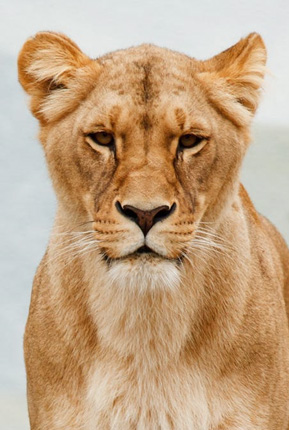
All Animals

The Lion: The Majestic Apex Predator of the African Savanna
The lion, often referred to as the "King of the Jungle," stands as one of the most iconic and majestic animals in the world. With its regal mane and powerful physique, the lion symbolizes strength and leadership. Native to the savannas and grasslands of Africa, and with a small population in India’s Gir Forest, the lion plays a crucial role in maintaining the balance of its ecosystem.
Lions are distinguished by their robust build and striking appearance. Males can weigh between 330 to 550 pounds (150 to 250 kilograms) and reach lengths of up to 10 feet (3 meters) from head to tail. Their golden-brown coats provide camouflage in the savanna’s grasslands. The most notable feature of male lions is their impressive mane, which serves both as a display of dominance and protection in fights. The mane, ranging from light blonde to deep black, enhances the male’s appearance and signals his health and genetic fitness.
Females, known as lionesses, are slightly smaller and lack the mane but are equally vital to the pride. They possess sleek, powerful bodies suited for hunting and are the primary hunters within the pride. Their coat coloration is similar to that of males, providing effective camouflage during their nocturnal hunts.
Lions are unique among big cats for their social behavior. They live in groups called prides, which typically consist of 10 to 15 individuals. The pride is generally led by a coalition of males and a group of related females and their cubs. Female lions form the core of the pride, working together to hunt, protect their territory, and care for the young.
Males, while less involved in hunting, play a crucial role in defending the pride’s territory from rivals. They often form alliances with other males, known as coalitions, to strengthen their position and increase their chances of protecting and securing their pride.
As apex predators, lions play a crucial role in their ecosystem. Their diet mainly consists of large herbivores such as zebras, wildebeests, and buffaloes. Lions hunt in a coordinated manner, with lionesses using their speed and stealth to ambush prey. The hunt typically begins with stalking, often at dusk or during the night when the prey is less vigilant.
Once the prey is within range, the lionesses execute a synchronized attack, using their strength and teamwork to bring down the animal. Male lions occasionally join the hunt, especially when the prey is large or when the pride’s survival is at stake.
Despite their formidable presence, lions face significant threats from habitat loss, human-wildlife conflict, and poaching. The decline in prey populations and encroachment on their natural habitats have put lions at risk. Conservation efforts are essential to protect these majestic creatures, preserve their habitats, and ensure their survival for future generations.
Organizations and wildlife reserves are working tirelessly to address these challenges, implementing measures to mitigate human-wildlife conflict, and promoting conservation awareness. By supporting these initiatives, we can contribute to the protection of the lion and the preservation of the delicate balance of the African savanna ecosystem.
In summary, the lion, with its grandeur and social complexity, remains a symbol of strength and resilience. Its role in the ecosystem as a top predator underscores the importance of conserving these magnificent animals and their habitats to maintain the natural balance of the wild.
